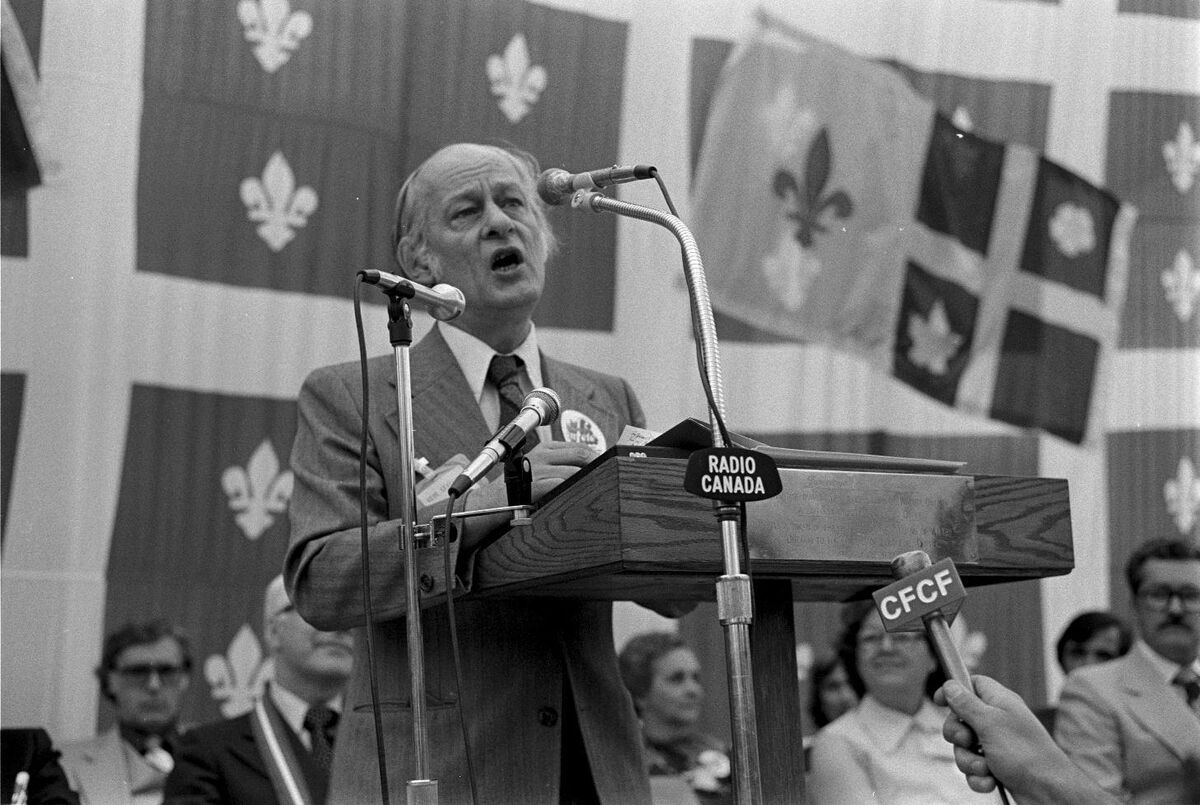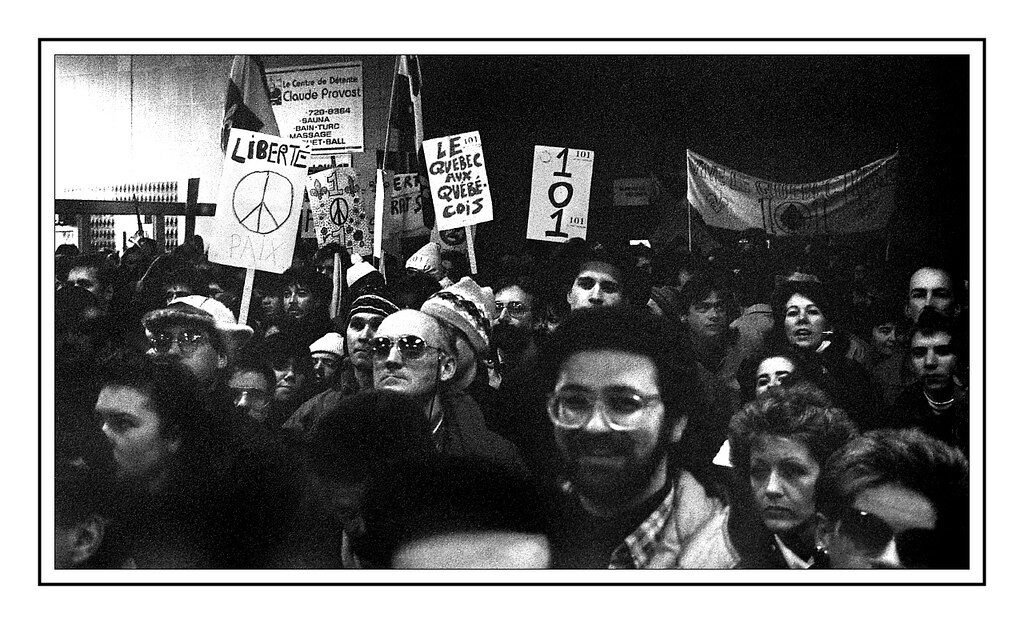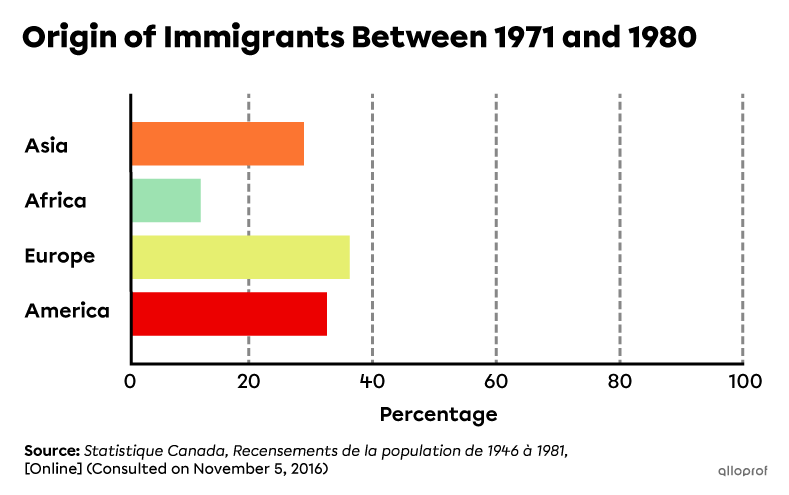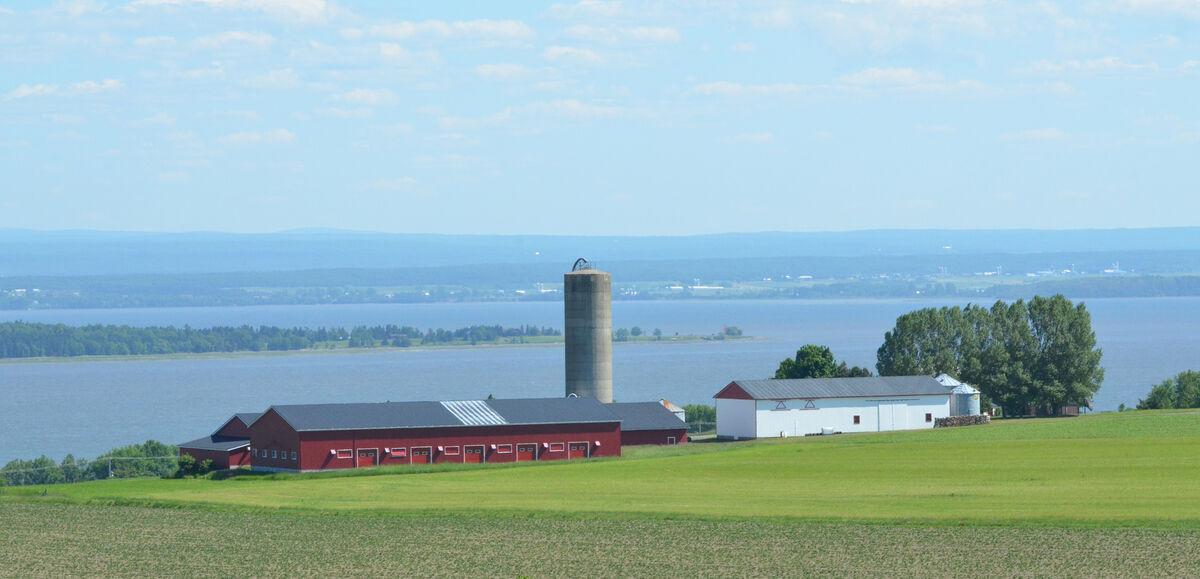On November 15, 1976, René Lévesque and the Parti Québécois won the provincial election. It was the first separatist party to lead Quebec. The people of Quebec had both positive and negative reactions: unions and separatists viewed this victory as a positive step toward Quebec’s independence, while Anglophone groups and federal public servants mostly opposed the idea of separation from the rest of Canada.
One of René Lévesque’s first objectives was to keep the people of Quebec united. In the early years, the government set aside the sovereignty referendum and focused on other issues.

The Parti Québécois prioritized social measures. When he took office, René Lévesque created new ministries and institutions to reform various areas of the province and meet the public’s needs.
| Sector | Name of the law | Description |
| Social (Youth) | Youth Protection Act |
|
| Road safety | Automobile Insurance Act |
|
| Environment | Bureau d’audiences publiques sur l’environnement |
|
Here are some examples of changes the government made in 1977 and 1978.
Bill 101, also known as the Charter of the French Language, was adopted by René Lévesque’s Parti Québécois government in August 1977. The purpose of Bill 101 was to protect the French language. In order to achieve this, the Charter includes several elements:
-
French is the only language permitted on public signs, especially for businesses.
-
Only the French version of laws will be recognized.
-
Only children whose parents attended English-language school in Quebec may attend English-language schools.
-
All immigrants must attend a French-language school.
-
Businesses with more than 50 employees must have a francization certificate.

In Quebec, access to contraception and changing mindsets caused the birth rate in the province to drop drastically. Immigration became an important way to keep population numbers up.
Canada previously had a very strict immigration selection process. Europeans were usually selected over other candidates. In 1976, Pierre Elliot Trudeau’s government changed the requirements for newcomers, opening the door to immigrants from countries which had previously been denied. Residents of several French-speaking countries (former French colonies) such as Haiti and Vietnam were now able to move to Canada. The province was becoming more culturally diverse.

Many immigrants settled in Quebec since it was considered the gateway to Canada. While many immigrants continued to arrive from Europe, increasing numbers of immigrants and refugees from other regions of the world settled in Quebec. To promote the use of French, the government of Quebec prioritized French-speaking immigrants in its territory. In 1978, Quebec signed an agreement with the federal government to select its own immigrants. This allowed the provincial government to determine how many immigrants it wanted to receive and set its own selection criteria.
René Lévesque also worked closely with the unions in Quebec. Labour standards were one of the key areas affected by the government.
At that time, working conditions in Quebec varied from one job to another. In 1979, the government standardized these conditions under the Act respecting labour standards. This Act put various measures in place to improve the lives of all Quebec workers, such as a minimum wage, sick days, vacation time, pay equity, etc.
-
The work week was limited to 44 hours and overtime had to be paid at time and a half.
-
A minimum wage was created, which guaranteed that employees were paid enough.
-
Occupational health and safety was introduced. The purpose of this Act was to limit workplace accidents and health hazards. Employees had the right to refuse to perform unsafe tasks. Pregnant employees were entitled to a preventive withdrawal if necessary.
-
All employees were entitled to a minimum number of vacation days per year.
-
Lise Payette, Minister of State for the Status of Women, introduced maternity leave. This allowed women to keep receiving a portion of their salary after giving birth. It also guaranteed they would get their jobs back once their maternity leave ended.
When it took power, the Parti Québécois said it wanted to be “a good government.” Various measures were implemented to regulate the electoral process. René Lévesque mainly focused on political party financing.
In the past, political parties could be influenced by companies or individuals who gave them money to finance their election campaigns. René Lévesque decided to change party financing regulations to lessen the influence certain groups had on the government.
For example, only citizens with the right to vote were allowed to donate money to different parties. This limited the influence that unions or companies had on the government. People were only allowed to contribute up to a certain amount and this contribution was made public for the sake of transparency. This reduced the risk of party-financing bribery and helped ensure unbiased government decisions.

The number of suburbs in Quebec skyrocketed in the 1950s and 1960s. This unprecedented real estate expansion affected the territory seeing as much of the agricultural land was being turned into residential neighbourhoods, threatening the remaining rural areas. The most fertile land in the province was in the St. Lawrence Valley, where the largest cities were also located. Rural areas were highly sought after to build businesses or neighbourhoods and many farmers sold their land to real estate developers. To preserve as much agricultural land as possible, the government imposed the Act respecting the preservation of agricultural land. As a result, agricultural land could only be used for farming as opposed to residential or industrial purposes.